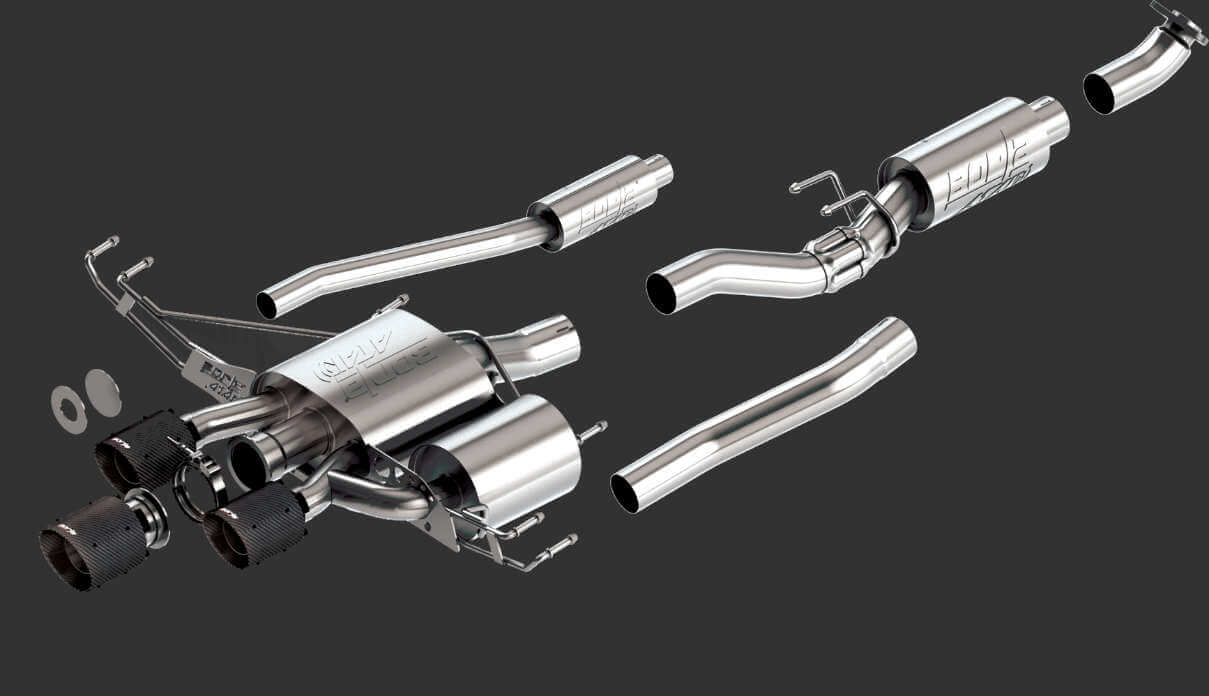When it comes to boosting the performance and sound of your vehicle, enhancing your car exhaust parts can make a marked difference. Regardless of whether you are looking for improved horsepower, better fuel efficiency, or a more aggressive sound, picking the right components is crucial. Given the plethora of options available on the market, it can be overwhelming to navigate the choices and determine which parts will best suit your needs.
Comprehending the various exhaust components and how they function together can help streamline the decision-making process. From headers and catalytic converters to mufflers and exhaust tips, each part serves a unique role in your vehicle’s performance and emissions. By considering factors such as material quality, compatibility with your car model, and your desired outcome, you can make smart choices that will enhance your driving experience.
Understanding Exhaust Systems Components
The emission systems is a key part of a automobile that plays a significant function in automotive performance and pollution control. At its core, the structure is made up of different parts, such as the exhaust manifold, catalysing catalyzer, silencer, and exhaust tubes. All of these parts plays a part to chanelling toxic gases from the motor, minimizing noise, and enhancing the vehicle’s performance.
The exhaust manifold is the initial part of the emission system, linking the motor's cylinders to the exhaust pipes. It gathers exhaust gases from multiple cylinders and directs them into a unified tube, which assists maintain optimal motor performance. A performance-focused manifold can enhance emission flow, leading to gains in power and torque.
A further, important part is the catalytic catalyzer, which plays a vital function in reducing harmful emissions. It utilizes chemical-based reactions to transform toxic gases into more harmful substances before they exit the emission structure. Selecting a quality catalyzing catalyzer is crucial for measuring performance and compliance with pollution regulations, making it a critical consideration when enhancing emission parts.
Selecting the Best Components
As you choosing car exhaust parts, the choice of materials significantly impacts functionality, longevity, and noise. Stainless-steel is among the widely used options, noted for its resistance to rust and durability. It is capable of enduring extreme temperatures and difficult environments, making it an optimal material for exhaust components that are expected to endure. Additionally, stainless steel provides a shiny look that boosts the aesthetic of your vehicle.
An alternative common material is aluminized steel, as it is cheaper than stainless steel but has its trade-offs. While it provides a degree of resistance to rust, it does not work as effectively in extreme conditions and may need to be swapped out more frequently. If you are in search of a budget-friendly choice for your exhaust setup, aluminized steel could be a viable choice, but be aware of its limitations regarding longevity.
For those looking to maximize performance, explore titanium alloy exhaust parts. Titanium parts is lightweight yet exceptionally strong, allowing it to enhance your vehicle's responsiveness and acceleration. However, it generally has a premium price. Ultimately, your decision should reflect a equilibrium between cost, desired performance, and how often you intend to drive your car under different conditions.
Setup and Care Guidelines
While setting up automobile exhaust parts, confirm you have the appropriate tools and adhere to the manufacturer's directions carefully. A common installation may need tools like sockets, ratchets, and a jack for elevating your vehicle securely. Prior to starting, take the opportunity to examine your current exhaust system for any concerns that might interfere with the installation, such as corrosion or deterioration. Adequate sealing and positioning during installation are crucial to prevent escape and ensure ideal performance.

Routine maintenance of your exhaust system is essential to prolong its longevity and preserve performance. Post installation, check for any signs of rust, deterioration, or unsecured connections at least monthly, especially if you reside in areas where salt is used on the roads or where there's heavy precipitation. A brief inspection can save you from high repairs in the future and keep your exhaust functioning properly.
As for maintenance, don’t forget to monitor the support fittings. As Akrapovic , bolts and supports can become loose due to thermal expansion and shaking. Fasten them as necessary and change any broken components immediately. Additionally, think about regular professional inspections to make sure everything is functioning as it should and to catch any likely concerns before they escalate.
